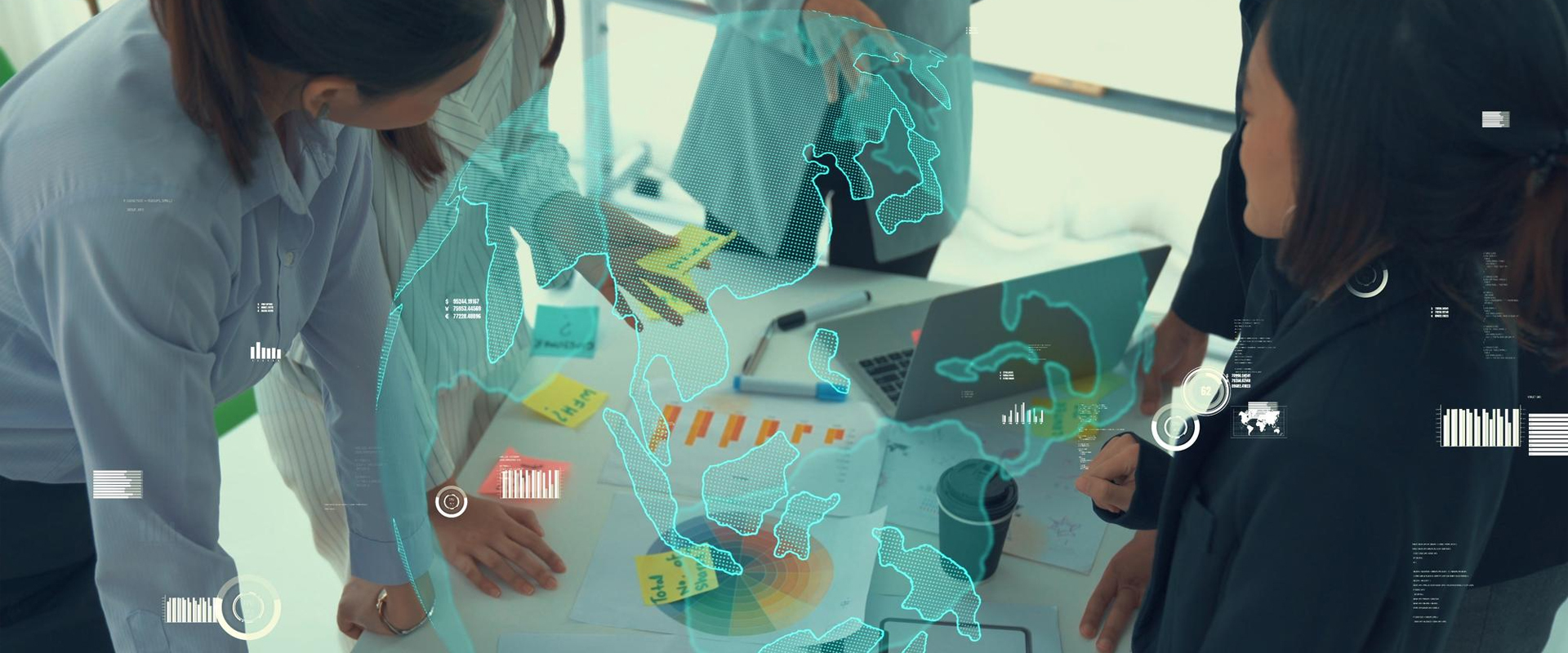

Electronic Case Report Forms: Innovation in Clinical Research
Last Updated on January 3, 2025
Clinical trials play a crucial role in developing new medicines by assessing their safety and effectiveness. On the other hand, researchers are always curious about making these trials more convenient. In addition, the electronic case report form is essential in gathering data in clinical trials.
The traditional approach uses paper case report forms to gather data from study participants. In addition, the records contain patient characteristics, demographic data, adverse events, and experimental treatment results.
When a study is over, the paper CRFs are sent from the study sites to the sponsors. Furthermore, at the sponsor’s end, the data undergoes a process. For instance, cleaning, preparation, transformation, and manual entry into a computer database before analysis.
Now, let’s explore the current trend in clinical research where medical device companies use electronic case report forms as a digital alternative. Let’s dive into the basics of eCRFs and how they are used in clinical trials for medical device companies.
What is an Electronic Case Report Form? And What Does an eCRF Do?
An eCRF is a digital case report form.
• A digital version of traditional case reports.
• A way to gather and share information about clinical study participants.
• Offers safe cloud-based data keeping and sharing among stakeholders in real-time.
• Makes research studies safer and more efficient.
• It lowers the risk and cost for companies that make medical devices.
What Role Can Electronic Case Report Form Play in a Clinical Trial?
Let’s ask ourselves: What exactly is an eCRF in clinical trials? An electronic case report form eCRF is a web-based software application utilized in clinical trials to gather and store patient data.
Is there any Difference Between eCRF and Electronic Data Capture (EDC)?
While electronic case report forms (eCRF) and Electronic Data Capture (EDC) are frequently used interchangeably, it’s important to note that they are not the same.
Firstly, the eCRF is essentially the electronic version of a case report form, while an EDC system is software created explicitly for collecting data in clinical studies. Moreover, EDC systems make it easy for researchers to design and submit eCRFs through a user-friendly graphical interface.
In addition, EDC systems can support different methods of data collection. In addition, this includes automatically transmitting data from electronic health records (EHR) and connected medical devices. Furthermore, this automation ensures that clinical data is accurate, authentic, and secure.
On the other hand, traditional paper-based methods lack the efficiency and security offered by EDC systems. Moreover, manual data entry from paper forms can introduce errors and delays in the research process.
Furthermore, the versatility of EDC systems extends beyond just electronic form submission. For instance, they allow for seamless integration with various data sources, ensuring a comprehensive and streamlined approach to data collection in clinical studies.
Can I Transfer Paper CRF directly to the Electronic Case Report form (eCRF)?
People are curious whether they can directly convert paper CRFs into electronic CRFs and how this would affect clinical work.
Let’s have a look,
It would help if you made a paper CRF and an electronic CRF for this choice. Undeniably, this will speed up the data entry process. However, keeping source data on paper ensures rules are followed.
Writers sometimes make mistakes that lower the data integrity and data quality. On the other hand, making an electronic case report form eCRF from the start is best so the shift goes smoothly. Moreover, this can save time and money because turning a paper CRF into a digital format is difficult.
How do you Design an Effective Electronic Case Report Form?
Designing an electronic case report form can be a complex task, but it can be a rewarding experience with the right approach. Firstly, there are several key factors to consider when creating an eCRF, such as the data fields, layout, and user interface.
Additionally, by taking a conversational approach to the design process, you can ensure that the eCRF is user-friendly and intuitive for data entry. Furthermore, incorporating end-user feedback throughout the design phase enhances the likelihood of creating a more effective and user-centric electronic case report form.
Clinical trial sponsors create eCRFs to gather data from a clinical investigation. The researchers will use collected data to test the experimental hypothesis. Moreover, it provides answers to research questions related to the study.
It’s standard for eCRF design to include excessive data collection. Furthermore, adding additional data fields to your eCRF will increase the time and financial resources allocated towards data collection, entry, preparation, and analysis.
An effective electronic case report form eCRF should only collect the necessary data for the study. Moreover, it should avoid unnecessary elements that could slow down the data collection process without providing valuable information.
Furthermore, prioritizing streamlined and targeted data collection ensures a more efficient and cost-effective research endeavor.
To accomplish this, it is essential for trial sponsors to carefully plan their clinical investigations and data collection activities before designing an eCRF. To begin making a good eCRF, follow these steps:
Develop a Well-Defined Hypothesis
When designing an electronic case report form eCRF, formulating a well-defined research hypothesis for your clinical investigation is essential.
Additionally, when creating your view, it’s essential to consider how your medical device will benefit patients in the treatment group.
Moreover, considering these factors ensures a comprehensive and thoughtful approach to the design of your electronic case report form.
On the other hand, formulating a hypothesis is essential in understanding which data is relevant to your investigation and which data can be disregarded.
Create a Statistical Analysis Plan
Once you have formulated a hypothesis, creating a Statistical Analysis Plan (SAP) outlining how to analyze the data collected during the clinical trial is essential. Moreover, this section lists the data required for a thorough analysis that supports or denies your research theory.
Furthermore, you can also include details about the graphs, charts, or other visuals you plan to create in your SAP by using the data gathered from your clinical trial.
Establishing Your Data Collection Strategy
The data collection plan specifies the questions that will be asked to gather the necessary data for supporting the hypothesis. In addition, it’s essential to consider how the questions will be asked and formatted on a digital case report form (eCRF).
Prepare for your Data Collection Activity
When planning data collection activities, it’s crucial to define the methods researchers will use to collect, capture, and store data throughout the clinical trial. Furthermore, it would be helpful to record the responses of inquiries to strengthen your plan, such as:
- What kind of data do you have?
- What information will be gathered?
- How much do we need?
- What is the plan for gathering the data?
- What is the date for data collection?
- Who will be responsible for collecting the data?
- Which place will we use to store records?
- How are you going to share data?
By carefully formulating a research hypothesis and developing a systematic approach to collecting and analyzing your clinical data, you can prevent the standard error of gathering excessive data that exceeds the requirements for testing your hypothesis.
What are the Principles of Good eCRF Design?
The first three principles of a good eCRF design are:
- Eliminate uncertainty by making questions explicit. Moreover, use Yes and No questions.
- Request data with required fields to prevent missing data. Furthermore, use a mandatory setting to remind people to complete fields.
- Acquire more quantifiable and less irrelevant data by avoiding free-text questions. Moreover, use pre-defined options instead.The remaining principles of a good eCRF design are:
- Slow down your work, give your enthusiasm to report
- Set your limits and boundaries
- Make your eCRF simple as possible
What are the Potential Benefits of Electronic Case Report Form?
There are several advantages to using an eCRF instead of paper forms for data collection during a clinical study:
Enhanced Data Accuracy and Reliability
Electronic case report forms (eCRF) streamline the process of error checking and data consistency by incorporating validation checks that instantly verify data entry. Furthermore, minimizing the chance of human error and ensuring consistency makes the data collected more reliable.
Ease of Access
A secure web interface lets clinical research investigators access eCRFs anywhere, globally, anytime.
Ensuring Traceability
eCRFs provide comprehensive data traceability by recording every change with dates and times and an audit trail.
Timesaving
Moreover, efficient and convenient eCRFs streamline data collection and analysis, allowing real-time data capture. This reduces data processing time and shortens the overall duration of clinical studies.
Cost Effective
In addition, eCRFs can help reduce clinical study costs by eliminating expenses related to paper forms Such as printing, storage, and document management.
Data Security and Privacy
Moreover, eCRFs usually have robust security features to safeguard data, including encryption, access controls, identity management, and event logging. In addition, these measures ensure secure storage and data protection against loss, unauthorized access, and disclosure. Enhancing data security in a clinical study is crucial for ensuring the confidentiality and integrity of the collected data.
Furthermore, incorporating an eCRF into clinical studies enhances their quality, efficacy, safety, and cost-effectiveness. This makes it a highly appealing option for researchers and healthcare professionals engaged in clinical trials.
Wrapping Up
Electronic case report forms (eCRFs) are changing clinical research by making it more efficient and encouraging new ideas. Switching from paper-based processes to electronic systems offers a wide range of advantages.
These include better data accuracy, real-time monitoring, cost savings, and improved data analysis capabilities. In addition, rapid technological innovation will change clinical trials by seamlessly combining eCRFs with other digital health tools.
Moreover, embracing technological advances marks a significant leap in research. It promises efficient, accessible, patient-centric healthcare for the future.
Minerva conducts clinical trials and actively seeks volunteers to participate in these studies. In addition, Our organization is dedicated to maintaining legal standards in their guidelines and are committed to ensuring the trial experience is smooth for everyone involved.





